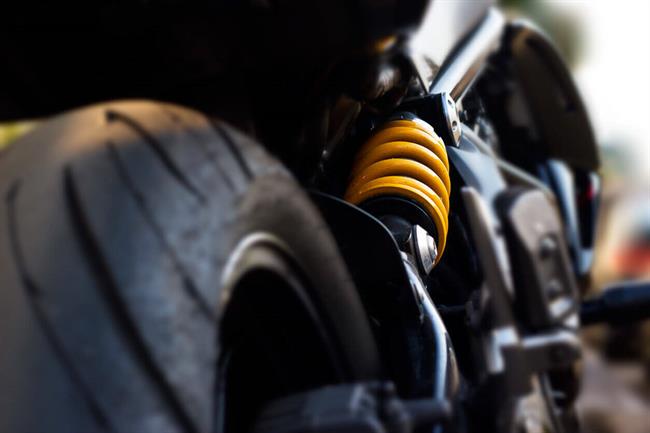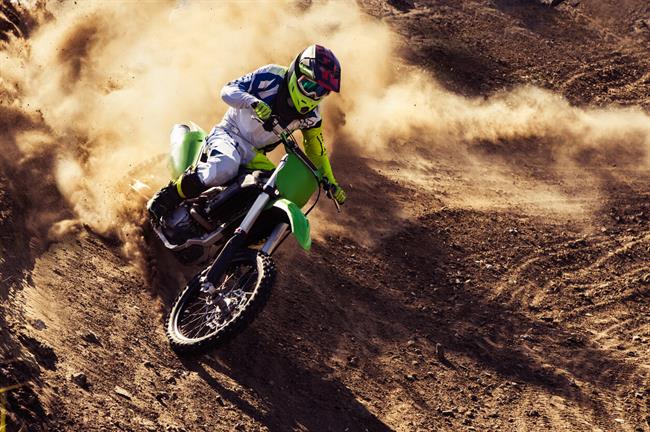WORKSHOP OPENING HOURS: Mon - Fri 9am - 5pm | Sat 9am - 1pm
+44(0) 1249 721 001WORKSHOP OPENING HOURS: Mon - Fri 9am - 5pm | Sat 9am - 1pm
+44(0) 1249 721 001
17-Sep-2019
Motorcycle suspension, much like a motorcycle engine, consists of a number of moving parts. As you could imagine, the frequent movement of the parts can end up causing a lot of friction, resulting in inevitable wear and tear (as well as contamination). If left untouched, these issues can lead to the deterioration of lubricating properties and a reduction in the life of your suspension. It is important to note that no moving part can last forever, which is why it’s important to ensure your suspension is regularly serviced.
There is really no point in adjusting your suspension if components of it, or other parts of your motorbike (e.g tyres) are not performing at their optimum. So before you go ahead and make those much needed adjustments to your suspension, it is important to give your motorcycle a full once over to check everything is working correctly.
When performing this check, you’ll want to make sure you’ve closely inspected the following:
Your rear shock absorber provides two primary functions: The first function is to support the weight of the rear of the bike. The second key function is damping, this helps to control the friction force exerted when riding, removing unwanted suspension motions that often occur from bumps and knocks on the road/track. If you’re not sure what the symptoms of worn shock absorbers are, give our recent blog post a read.
Typically fitted to make your bike more stable (and incidents of being thrown off your bike less likely), their main purpose is to protect you from undesirable, uncontrolled movement or oscillation (otherwise known as wobble). They also play a big role preventing rider fatigue and should not be overlooked when giving your motorcycle a once over.
Most forks incorporate your front suspension and front brakes, and allow the front wheel to rotate on the steering axis. When looking over your forks, we recommend you check your fork seals for leaks, as this can be dangerous and may cause ongoing issues with your suspension later on. If ignored and not maintained, you could be putting yourself and others at risk, this is why it is always worth checking them regularly.
Steering Head Bearings, otherwise know as steering stem bearings (or neck bearings) often need replacing from time to time due to the natural wear and tear that takes place during use. It is important to spot damaged steering bearings as early as possible, this way you can ensure your steering remains optimal at all times. Failure to spot these issues early can be dangerous and will have a negative impact on your steering.
Wheel bearings are usually deep groove ball-type roller bearings, often sealed to help keep lubrication in, and mud, water and road grit out. If one wheel bearing fails, the others usually tend to follow – this is why many choose to replace all of their bearings (in that one wheel) all at once. We also tend to apply a similar rule when talking tyres – although combining new and old tyres are not a sin, fully replacing both (if wear and tear is visible) is recommended.
When setting up your motorbike’s suspension, it’s worth considering the type of riding that fits your purpose – the two main styles being road and track. Road users typically expect smoother suspension due to travelling longer distances on bumpy (often pot hole ridden) roads. Track riding on the other hand tends to focus more on optimum performance over comfort. If you plan to use your motorcycle for both, it’s important to adjust your settings accordingly for the purpose you require.
The first step to good road suspension is setting static sag. Typically, you can expect the correct movement range for street setup to be around 30-40mm for both the front and rear suspension. It’s worth starting with that range and making incremental adjustments depending on whether you have too much or too little sag.

As with the the road setup, it is important to ensure that your bike’s suspension is in good working order before adapting any of your settings (you can do this by checking the components mentioned above). One word of caution regarding this setup: avoid adjusting your suspension to account for tyre wear over the course of a track day (unless you’re willing to take notes before and after).

When tweaking your ride, it is important to alter each aspect (one at a time) whilst paying close attention to how your motorcycle feels. Each adjustment made can make a significant difference to your rides experience (mostly for the better, however occasionally for the worst). This is why it is important to test each adjustment separately – that way you will be able to change or replicate the issue quickly and effectively.
If your motorcycle is experiencing any of these issues mentioned above, we highly recommend you get in touch with MH Suspension today. Your suspension needs to be maintained and serviced on a regular basis by a specialist mechanic who knows what they’re doing – Find out how we can help.